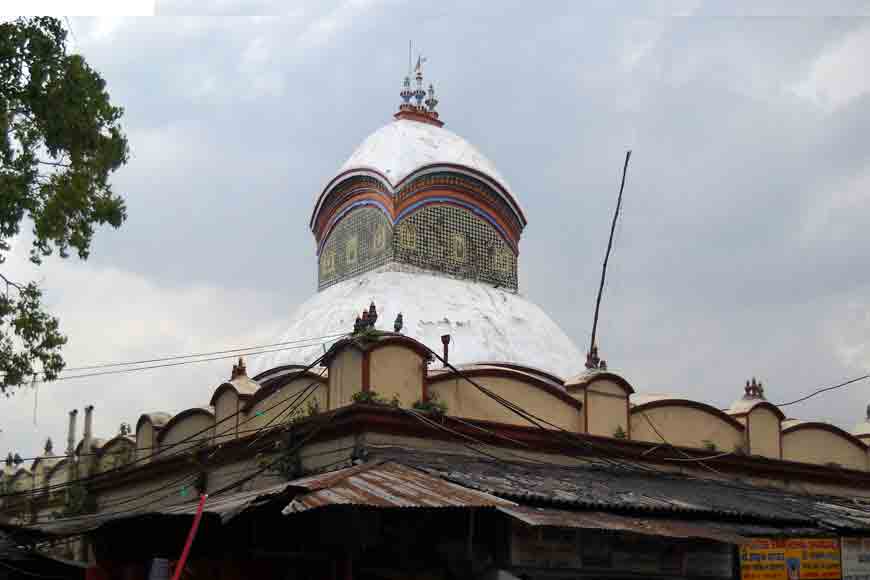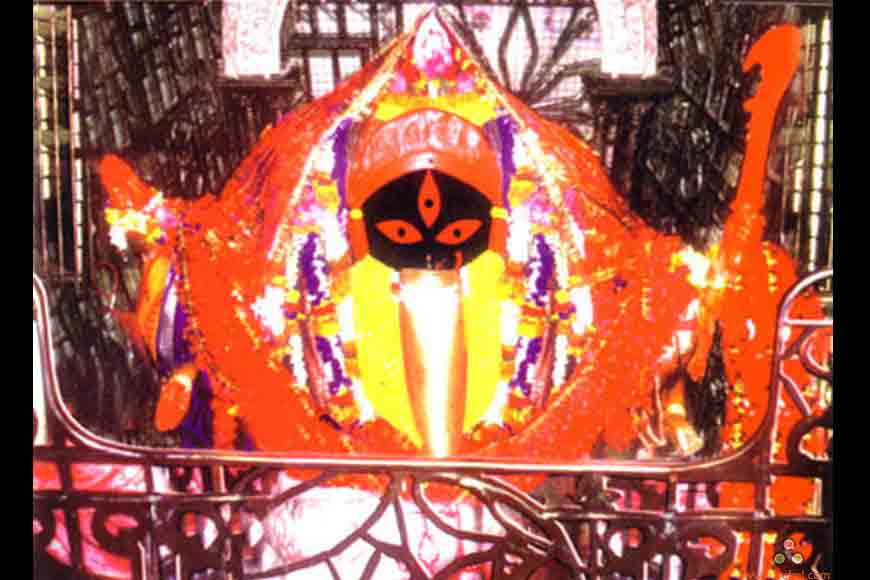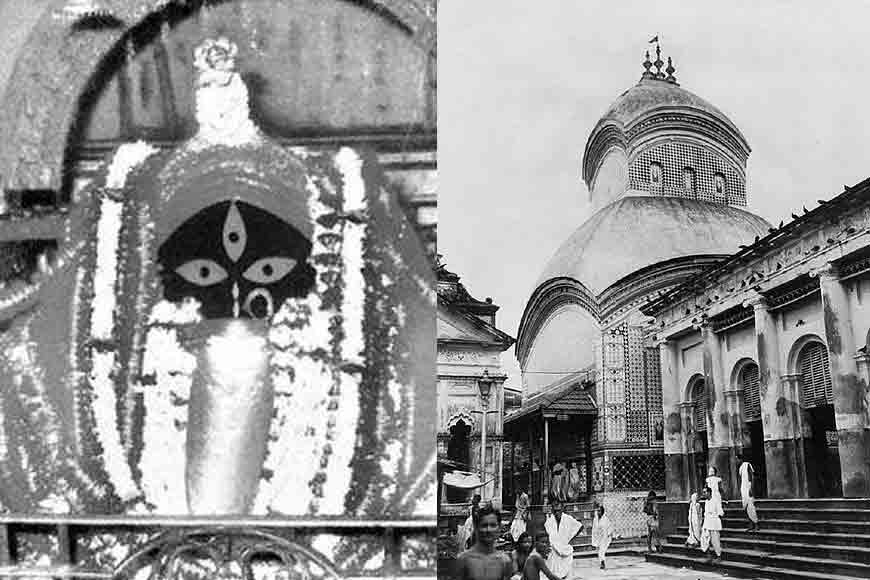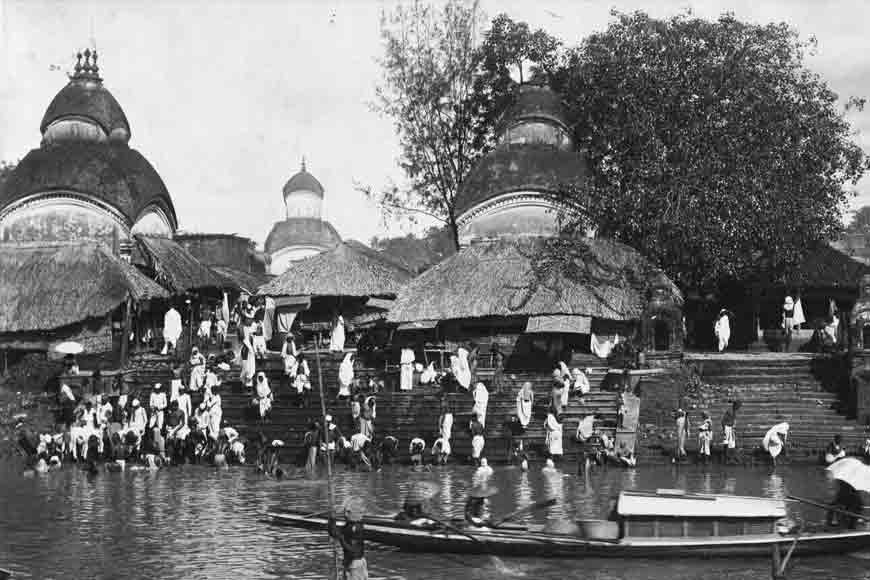The Kali idol of Kalighat has a significance beyond religion - GetBengal story

The Kalighat Kali Mandir is a classic example of Bengal architecture which is a structural emulation of the mud and thatch-roofed huts of villages. Kalighat’s main temple is a four-sided building with a truncated dome. A smaller identically-shaped projection caps this domed structure. Each sloping side of the roof is referred to as a chala. Therefore, the Kalighat Mandir is designated as chala temple. The two roofs bear a total of eight separate faces. This stacked, hut-like design is common for Bengali temples.

Both roofs are painted with shiny, metallic silver and are decorated with bright bands of red, yellow, green, and blue where they join the building at the cornice. The uppermost roof is topped by three spires with the tallest central spire bearing a triangular pennant flag. Each of the mandir’s outer walls is decorated with a diamond chessboard pattern of alternating green and white tiles. A recent addition to the temple complex is the implementation of an elaborate lighting system which creates a novel mood and causes the mandir to glow with funky colors throughout the night.
The main shrine comprises the idol of Goddess Kali. Here the idol is made of black stone and decorated with gold and silver. The one of Lord Shiva is in silver. Three beautiful yet fiery eyes, long protruding tongue made of gold and four hands, which all are made of gold too. Two of these hands holding a scimitar and a severed head of the asura king ‘Shumbha’. The scimitar signifies divine Knowledge and the asura (or, human) head signifies human ego. The other two hands are the abhaya and varada mudras or blessings, which means her initiated devotees (or anyone worshiping her with a true heart) will be saved as she will guide them here and hereafter. The goddess is offered a ceremonial bath every year on the snan-yatra day, the rituals being performed by the priests who cover their eyes with cloth during the ceremony.
The Kali idol, primitively only had her face. Further tongue and hands made of gold and silver were added to the image. Another Kalika murti which is housed within is a representation of the goddess considered so powerful that it is never displayed to the public, nor ever seen by the priests. This hidden image of the goddess was not made with human hands, but was created by nature, and is therefore described as the self-generated, or svayambhu image of Kalika. Identified as one of the toes from Sati’s right foot, the adirup (original form) is said to have fallen at this shakti pith, and is concealed within the pedestal upon which the Kalika idol stands.

Right adjacent to the temple lies the Natmondir- it’s a platform through which the deity could be seen directly. Right next to the natmondir lies two sacrificial altars which also have a murti of Radha-Krishna. A sacred tank called Kundupukar lies in the south-east corner of the temple premises. The water of this pond is considered to be as holy as river Ganga and has the power to bestow the boon of a child. There are two queues going for darshan, i.e. Garbha-Graha (Nijo-Mandir) and other for having darshan from Verandah. (Jor-Bangla).

The image of Kali in this temple is unique. It does not follow the pattern of other Kali images in Bengal. The present idol of touchstone was created by two saints – Brahmananda Giri and Atmaram Giri. Three huge eyes, long protruding tongue made of gold and four hands in which two hands will be holding a sword and a severed head. The Sword signifies Divine Knowledge and the Human Head signifies human Ego which much be slain by Divine Knowledge in order to attain Moksha. The other two hands are in the abhaya and varada mudras or blessings.










